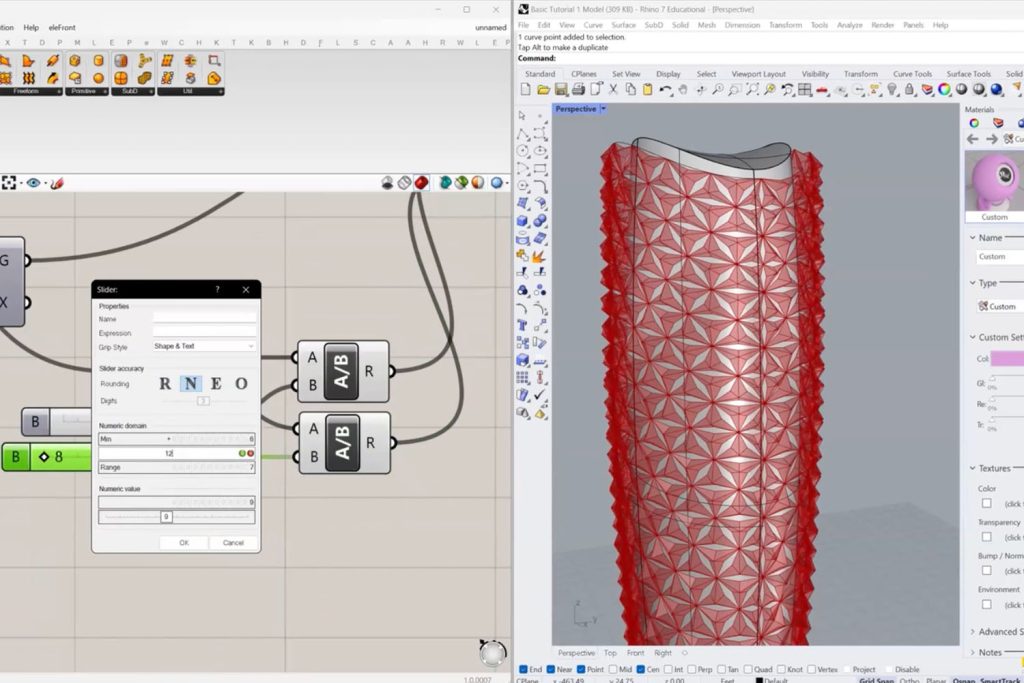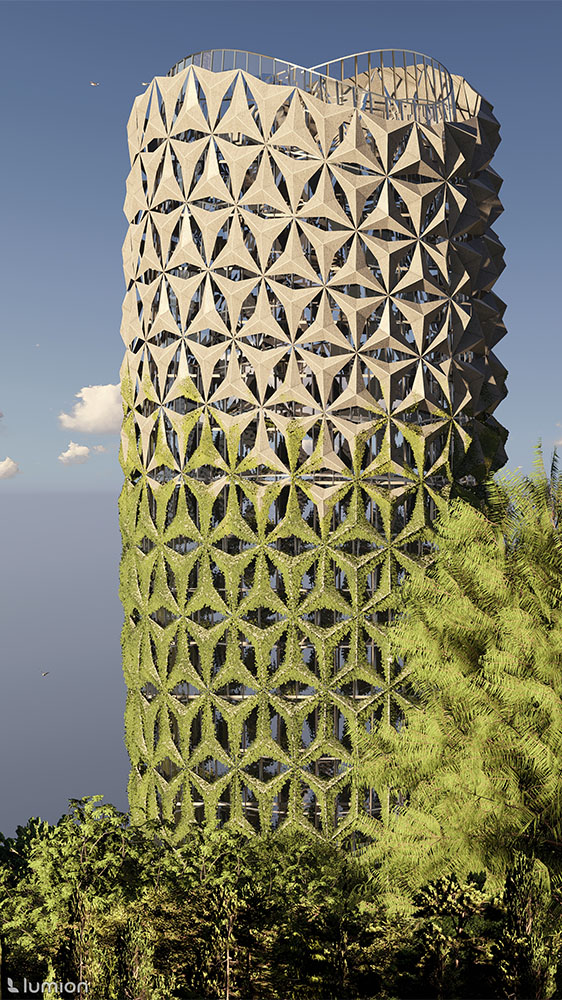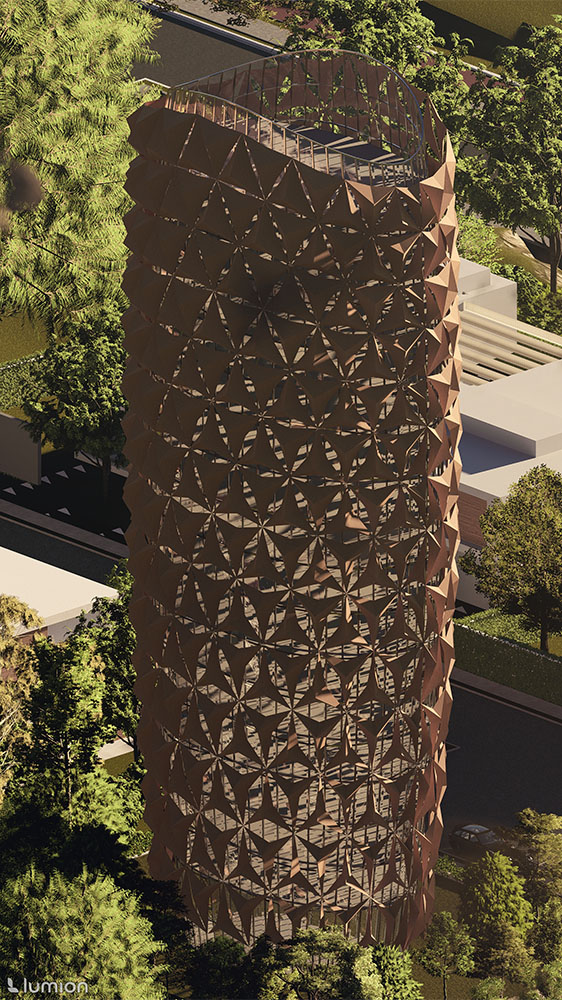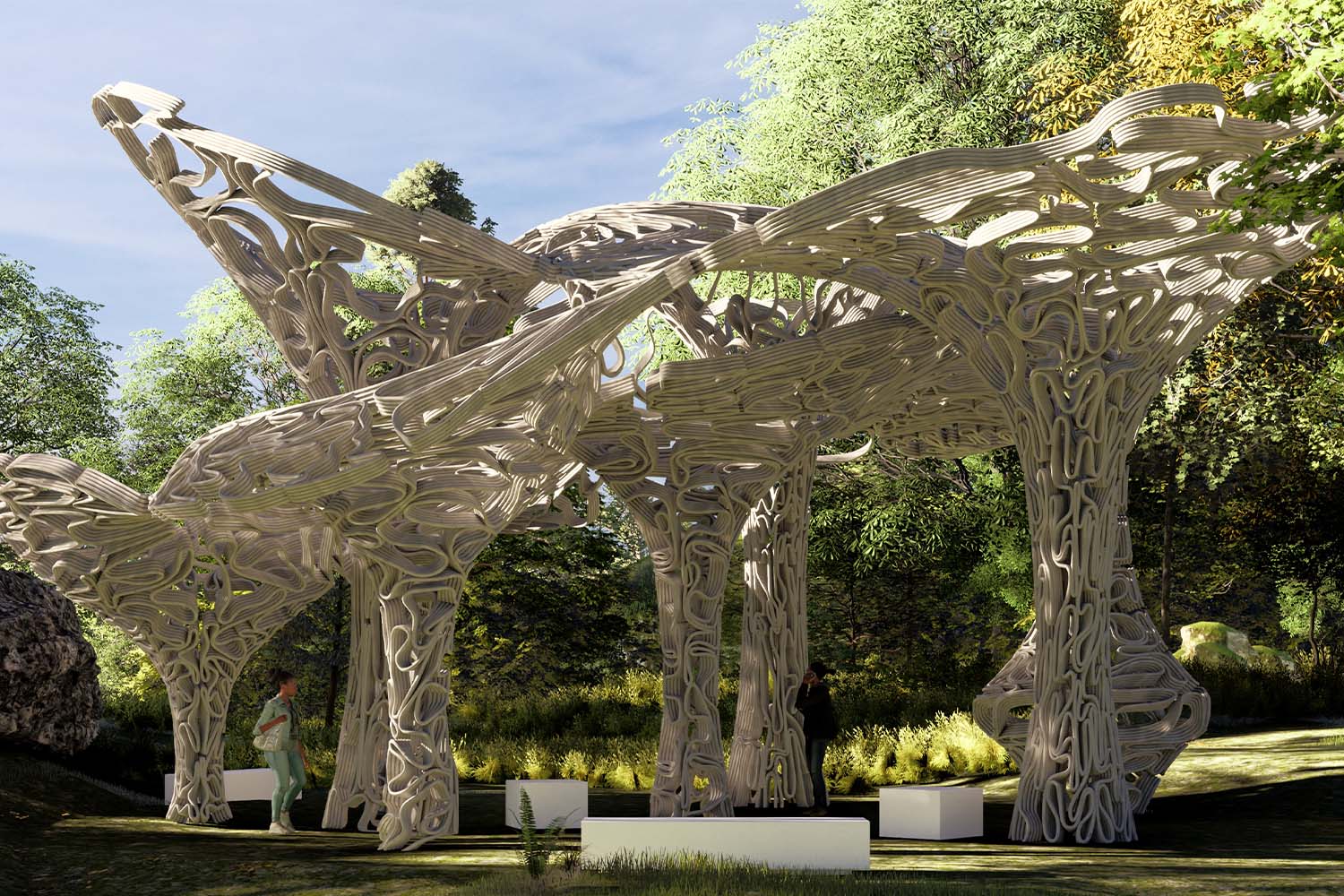
The Environment Reactive Computation (with Ladybug) workshop was led by Jacob Lehrer, a Leed-certified Architect. Learning Rhino and Grasshopper, he developed systems to create facades, pavilions, and sculptures using Kuka Robotics systems and Wasp clay 6-axis printing. With a focus on cutting-edge computational technologies and a commitment to sustainable design, Lehrer currently contributes his expertise to the MIT Mathematics Department.
Jacob kicked off the first session with a short presentation dissecting what sustainability is, explaining that the definition of the term varies from one individual to the other, showcasing some of his previous work describing how to implement natural elements into your design with Ladybug and how to design systems that can be done on any type of panels whether it’s flat or not as well as giving our participants a comprehensive idea on what a list structure means and how to manipulate it.


Jacob then proceeded with the theoretical part of the session, showing a hands-on demonstration on how to recreate his scripts after he ensured all our participants installed Ladybug successfully by providing them with a step-by-step installation guide. He then showed participants how to create scripts using his special techniques that are adaptable to natural elements using Grasshopper and Ladybug. Day 1 ended with our participants learning how to navigate through Lumion, getting the basics needed to carry on to the “mysterious, more challenging second session,” Jacob’s words, not ours.
Day 2 started with another comprehensive presentation where Jacob shared valuable information explaining how machines learn through formulas by various techniques such as reinforced learning, supervised learning, and backpropagation, breaking down the process for our participants so they can have solid grounds to build on. Jacob then walked our participants through his grasshopper workflow, showing them how to create unique designs and facades that would fit into specific areas while keeping natural elements in mind for their designs to be sustainable. He then ended the session with a Q&A session addressing all our participant’s questions, which then turned into a panel discussion where participants who wanted to participate could voice their opinions and questions.
If you are interested in the Environment-Reactive Computation workshop, check PAACADEMY to learn more about our other workshop on computational design and its tools.


















Leave a comment